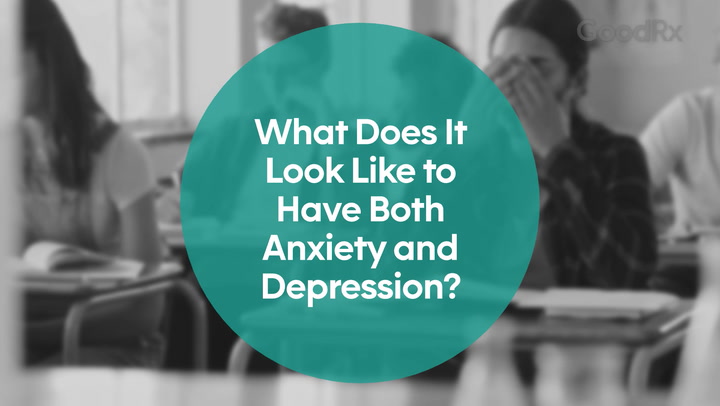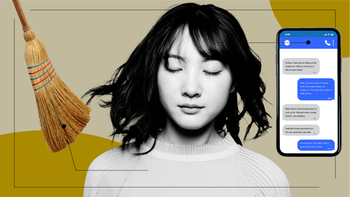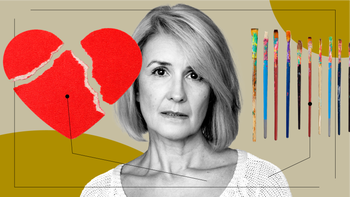
Best Treatment for Anxiety: Cognitive Behavioral Therapy vs. Medications
Key takeaways:
Anxiety disorders are mental health conditions that cause excessive, persistent worry — to the point where it gets in the way of your day-to-day life.
Anxiety disorders can be treated with medications or cognitive behavioral therapy (CBT). Sometimes, people use both at the same time.
Medications and CBT are equally good first-choice options for treating anxiety disorders.
The right treatment for you depends on your personal situation — like your symptoms, how you feel about taking medication, and whether or not you are interested in therapy.
Table of contents

Anxiety is a very common problem. We refer to it by many names: fear, worry, nervousness, or panic. People also experience anxiety in different ways: They may avoid situations, worry constantly, or have physical symptoms, to name a few.
Though it’s normal to have anxiety from time to time, sometimes fear and worry can start to feel out of control. And when these symptoms get so bad that they interfere with your life, it could be a sign that you’re dealing with a very common type of mental health condition: an anxiety disorder.
Anxiety disorders are some of the most common types of mental illnesses, affecting nearly 1 in 3 adults in the U.S. at some point in their lives.
Search and compare options
Of all anxiety disorders, generalized anxiety disorder (GAD) is the most common. Other anxiety disorders include:
Social anxiety disorder (SAD)
Separation anxiety disorder
Fortunately, anxiety disorders are treatable. The two main treatments are medications and a kind of therapy called cognitive behavioral therapy (CBT). But which is best? Or do you need both? The truth is, there’s no clear right or wrong answer. Medications and CBT are both very helpful for anxiety disorders, either on their own or when used together.
How do you know if you have an anxiety disorder?
We all experience anxiety once in a while. It’s part of being human.
So, how do you know if it’s just “normal” worry — or if you might have an anxiety disorder?
There are two key differences. First, when you have an anxiety disorder, your fear and worry are usually out of proportion to the actual situation. You might even feel scared and anxious when there’s no actual danger present.
And second: When you have an anxiety disorder, your symptoms make it hard to function in everyday life. You may find that your anxiety is hard to control, to the point where it causes major problems at work, home, or school.
What are the best treatments for anxiety?
The two best treatments for anxiety disorders are:
Medications: There are many different types of medications that can help with anxiety. Some types of medications prevent anxiety, while others can get rid of anxiety quickly in the moment. Some medications also need to be taken daily to work well, while others can be used on an “as needed” basis.
Therapy: Therapy — especially CBT — is a proven treatment for anxiety. In CBT, you meet with a therapist to talk about your problems, learn more about yourself, and to make changes to how you think and act. This can help get your anxiety symptoms under control, and help you learn to manage and prevent anxiety in the future.
Treatment for anxiety can include medication(s), therapy, or both. We’ll take a closer look at both of these below.
Which is better for anxiety, CBT or medication?
CBT and medication are both good first-choice treatments for anxiety, either on their own or together.
So far, there haven’t been many research studies that compare CBT to medication head to head, at least for anxiety disorders. For many reasons, research does not give clear answers about which works better, regardless of whether you look at all anxiety disorders as a group or each anxiety disorder on its own.
What we do know for sure is that CBT and medication are both very good treatments for anxiety.
Which is best for you depends on a many different things, including:
The kind of anxiety you have: The most effective treatment will be different for different anxiety disorders. For example, a phobia of flying on airplanes might be treated differently than GAD.
How quickly you need to treat your symptoms: Medications are usually better at treating anxiety quickly, although some CBT techniques can help manage in-the-moment anxiety too.
If you have any other health conditions: Some anxiety medications can affect other conditions or interact with the medications you take to treat them. You may need a different type of treatment if you have depression in addition to anxiety.
How you handle medication side effects: Some medication side effects may be more concerning to you than others. CBT has no side effects, though it can sometimes be very challenging work.
Your personal preferences and lifestyle: You may want to avoid medications entirely, or you may have no time for therapy and just want to take medication.
Cost and your insurance coverage: Most anxiety medications — but not all — are available as generics. And this can affect how much you’ll need to pay and whether insurance plans will cover it. Only some insurance plans cover CBT.
And remember: You may not have to choose between CBT or medication. Many people with anxiety opt for both. Combining CBT and medication can work better for some people than using either treatment alone.
Medications for anxiety
There are many different medications that can help with anxiety. So, how do you choose the right medication for you?
The best anxiety medication for you depends on:
The kind of anxiety symptoms you have
How much the pros and cons of each medication matter to you, like potential side effects, how often you have to take it, and what types of forms it comes in (like pills, capsules, or liquid)
Cost, which will depend on your insurance coverage and if the medication is available as a generic
Your personal lifestyle and preference
Most of the time, the top two medication choices for treating anxiety disorders are:
Selective serotonin reuptake inhibitors (SSRI antidepressants)
Serotonin-norepinephrine reuptake inhibitors (SNRI antidepressants)
But there are many other options too. These include:
Gabapentin (Neurontin)
Pregabalin (Lyrica)
Other types of antidepressants, including mirtazapine (Remeron), imipramine (Tofranil), and bupropion (Wellbutrin XL)
Let’s run through some of the main medications used in the treatment of anxiety.
Selective serotonin reuptake inhibitors (SSRIs)
These medications make more serotonin available in the brain. Serotonin is a chemical messenger, also known as a neurotransmitter. In the brain, serotonin is essential for feelings of happiness and well-being, as well as sleep and memory. It is often called the “happiness hormone.”
SSRIs are antidepressants that are also used to treat other conditions, including many types of anxiety. They are especially useful for GAD, panic disorder, and SAD.
Examples of SSRIs include:
Fluoxetine (Prozac)
Paroxetine (Paxil)
Sertraline (Zoloft)
Citalopram (Celexa)
Escitalopram (Lexapro)
When you first start taking these medications, you may feel side effects like nausea, headache, and sleepiness, as well as jitteriness. These usually go away within a few days, however. Other side effects may continue as long as you take SSRIs, including weight gain and sexual problems. These usually go away when you stop taking the medication, but there are also ways to lessen their severity while you’re still taking the medication.
Good to know: SSRIs are first-choice medications for many mental health conditions besides anxiety, including depression, post-traumatic stress disorder (PTSD), obsessive-compulsive disorder (OCD), and eating disorders.
Serotonin-norepinephrine reuptake inhibitors (SNRIs)
SNRIs work in a similar way to SSRIs, except they also improve the activity of another chemical messenger in the brain called norepinephrine. Norepinephrine is involved in how the brain stays alert and responds to stress.
These antidepressants are used for the long-term treatment of moderate to severe anxiety and work just as well as SSRIs.
Examples of SNRIs include:
Duloxetine (Cymbalta)
Venlafaxine (Effexor)
Side effects can be different depending on the medication and the person. Some SNRIs can make you more alert, while others can make you sleepy. Some can cause weight gain, while others can cause weight loss. Stomach upset and sexual side effects can be a problem too. Your healthcare provider can help guide you through the pros and cons of each. Often, side effects while taking these medications improve over time.
Good to know: SNRIs can treat other health problems besides anxiety and depression. Examples include chronic pain, fibromyalgia, and nerve pain related to diabetes.
Benzodiazepines
Benzodiazepines — often known as “benzos” — have a calming effect on the brain cells that cause anxiety. They are used to treat short-term anxiety symptoms that come on suddenly. These symptoms might happen at predictable times, like during a planned social event, or at unpredictable times, like during an anxiety crisis. In either case, benzodiazepines can work quickly to get anxiety symptoms under control.
Examples of benzos used to treat anxiety are:
Clonazepam (Klonopin)
Lorazepam (Ativan)
Diazepam (Valium)
Alprazolam (Xanax)
It’s not safe to take benzodiazepines regularly, or long term, as they can cause problems with dependence and addiction. They can also have side effects similar to those of alcohol:
Slowed thinking
Sleepiness
Poor balance
Poor memory
Good to know: When taken as prescribed, benzos can be very helpful for treating anxiety symptoms quickly. This is especially the case at the beginning of treatment, when you’re waiting for a long-term medication to kick in. But if they are not used in the right way or are taken for too long, big problems can arise.
Buspirone (Buspar)
Buspirone seems to help brain cells use serotonin and norepinephrine more efficiently, which may promote feelings of happiness and well-being. This medication treats mild to moderate anxiety, but it doesn’t treat severe anxiety very well.
Possible side effects with buspirone, like headache and dizziness, tend to be mild. Buspirone typically needs to be taken 2 to 3 times per day.
Mirtazapine (Remeron)
Mirtazapine is another antidepressant, but it works differently than SSRIs and SNRIs. It has a similar effect though: It improves brain cell communication through serotonin and norepinephrine, and as a result, it promotes feelings of happiness and well-being.
Mirtazapine is sometimes used off-label to treat moderate to severe anxiety, if SSRIs and SNRIs were not helpful. It is especially used this way if anxiety happens along with depression or insomnia.
Mirtazapine can cause sleepiness and weight gain in some people. This isn’t necessarily a problem. For some people, these effects might even be beneficial. Your healthcare provider can help guide you through the pros and cons of mirtazapine. Often, its side effects improve over time.
Hydroxyzine (Vistaril, Atarax)
Hydroxyzine is a prescription antihistamine that causes drowsiness as a side effect. It may also boost serotonin activity in the brain. It can be useful as a short-term anxiety treatment — a non-addictive alternative to benzodiazepines. You can take it as needed to control active anxiety symptoms.
Hydroxyzine can make you feel sleepy. At higher doses, it can cause dry mouth or blurred vision.
Propranolol (Inderal)
Propranolol belongs to a class of medications known as beta blockers. It is usually used to treat fast heart rates, ease chest pain (angina), and prevent heart attacks and migraines. It can also be used to lower high blood pressure. Because anxiety can raise your heart rate and blood pressure, propranolol can be helpful off-label for managing these physical symptoms of anxiety. It’s particularly helpful for treating performance anxiety or anxiety related to public speaking.
If you take too much propranolol at once, it can cause your blood pressure to drop and slow down your heart rate. This can make you feel dizzy, faint, or tired.
Cognitive behavioral therapy (CBT)
There are many different kinds of therapy methods for anxiety, but CBT has been studied most and is used most often. It’s usually done with a therapist, but now you can find CBT programs online and through smartphone apps.
CBT is based on the idea that the way you think causes your anxiety, and it starts with focusing on your thoughts. Being aware of how you think helps you discover patterns of thoughts that may be causing your anxiety. You then learn to use different methods to work with those thoughts, replacing old thinking patterns with new ways of thinking that don’t cause anxiety.
CBT also targets problem behaviors — things you are doing or not doing because of your anxiety. For example, you may avoid social situations or focus too much on unnecessary details of a project. CBT addresses behaviors you don’t like and can help you change them.
CBT usually involves seeing a therapist once a week for a total of 10 to 20 appointments, each about 45 minutes to an hour long. You may go more or less often, depending on your specific situation.
CBT often involves homework. A typical CBT homework assignment is to take note of how often you have a particular thought. Another example is to intentionally put yourself in a situation that might cause anxiety, so you can practice a CBT method you just learned.
CBT is effective for treating all anxiety disorders and is used as a treatment for many other conditions besides anxiety. These include:
Depression
PTSD
Pros and cons of cognitive behavioral therapy
The main benefits of CBT are that it doesn’t cause any side effects and it has long-lasting benefits when therapy is completed.
These may be some drawbacks of CBT:
It usually doesn’t help your anxiety right away. The process of learning about yourself and making changes can take weeks.
CBT requires you to be actively involved. With most medical treatments (such as taking a pill), you don’t have to do very much beyond remembering to take the medication. CBT requires a different commitment, both personally and with respect to time. This may be hard with a busy schedule.
Cost is a consideration. How much you pay will depend on your therapist’s charges and your insurance coverage. If you have insurance, you can call your provider before you start CBT to see if they will cover it.
It can sometimes be hard to find a therapist right away. You may have to reach out to several providers before you find someone with an opening. If you have insurance, your insurance company may be able to find someone who is accepting new patients.
Where can I find a CBT therapist near me?
There are many ways to find a cognitive behavioral therapist in your area. First, you can search for a therapist online through Psychology Today or the Association for Behavioral and Cognitive Therapies. Your insurance provider can also give you a list of therapists in your area. And if you don’t have insurance that covers therapy, remember that some therapists will adjust their fees depending on how much you can pay. To find them, search for therapists who offer a “sliding scale.”
Second, you can learn about low-cost mental health treatment options in your area from the National Alliance for the Mentally Ill (NAMI). Visit its website to find a NAMI organization near you.
The bottom line
Anxiety treatment isn’t one size fits all. One person’s response to a treatment will not be the same as another person’s response to the same treatment. Some people do better with medication, while others do better with CBT. And for some people, the best approach is a combination of both medication(s) and therapy.
It’s best to keep an open mind about treatments. Think about what would work best for you and work with your provider to make choices, track progress, and adjust along the way if needed. After all, your symptoms are unique, and your treatment plan should be too.
Why trust our experts?



References
American Psychiatric Association. (2023). What are anxiety disorders?
Bandelow, B., et al. (2015). Efficacy of treatments for anxiety disorders: A meta-analysis. International Clinical Psychopharmacology.
Cuijpers, P., et al. (2013). The efficacy of psychotherapy and pharmacotherapy in treating depressive and anxiety disorders: A meta-analysis of direct comparisons. World Psychiatry.
Curtiss, J. E., et al. (2021). Cognitive-behavioral treatments for anxiety and stress-related disorders. Focus.
Dunlop, B. W., et al. (2019). Benefits of sequentially adding cognitive-behavioral therapy or antidepressant medication for adults with nonremitting depression. The American Journal of Psychiatry.
National Institute of Mental Health. (2023). Anxiety disorders.
For additional resources or to connect with mental health services in your area, call SAMHSA’s National Helpline at 1-800-662-4357. For immediate assistance, call the National Suicide Prevention Lifeline at 988, or text HOME to 741-741 to reach the Crisis Text Line.

























